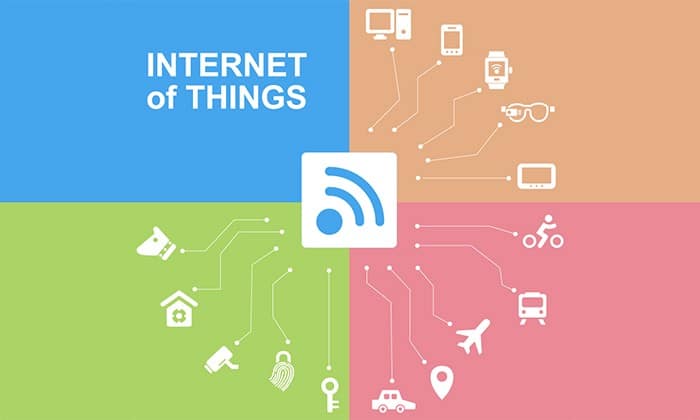How the IoT Is Fighting COVID19

As the world adjusts to a new, hopefully temporary, normal during the COVID19 outbreak, people are finding inventive ways to combat the pandemic. Ordinary citizens dust off sewing machines to make masks during a shortage of personal protective equipment (PPE). Local education institutes fire up the kitchen ovens to make lunches for children who might otherwise go hungry during school closures. Everyone is doing their part, so it makes sense that the Internet of Things (IoT) would get in on the relief efforts, too.
Currently, there are more than 1.5 million cases of COVID19 around the world and about 435,000 in the United States. As countries around the globe go into lockdown, people find themselves social distancing and changing their ordinary behaviors. Technology has been a godsend during this difficult time, and internet developers are well aware of the many ways technology can help in the fight against the virus and the resulting challenges to society.
How is the IoT fighting COVID19? You might be surprised at the creative solutions.
1. Taking Computing Online
Except for essential businesses such as grocery stores and pharmacies, companies find themselves sending workers home to complete tasks. Since many organizations weren’t prepared for remote work, figuring out how to stay connected and keep an operation running is challenging.
Experts already predicted that about 83% of company workloads would be cloud-based by the end of this year. That timeline has been ramped up by necessity as businesses figure out how to get everyone on the team working seamlessly on a variety of projects.
2. Managing Facility Capacity
One of the biggest reasons for social distancing is to flatten the curve of how many grow ill at the same time. Hospitals only have so much capacity to care for extremely sick people. IoT technology is capable of figuring out which places can take more patients and where they need resources. Technology can even manage workflows and prevent a shortage of healthcare workers or overworking the ones available.
Other possibilities include tracking oxygen tanks and ventilators. Elderly patients could also wear devices that alert home care providers to potential issues.
3. Meeting Virtually
The IoT makes digital meetings a reality, saving businesses and keeping families connected when they otherwise might not be. Reports abound of doctors, nurses and senior facilities allowing patients to talk with loved ones via video chat. Some products are available that hook into livestreaming abilities and enable people to chat at any time via a photo frame-type device. You can send one another pictures and videos of your day as well.
Isolation is hard for anyone, but those who are in nursing homes or live alone may feel particularly lonely. Video chat helps to alleviate some of the sadness and gives people a time to look forward to. As a result, it’s easy to gather with friends from the safety of one’s own home and still practice social distancing.
4. Serving Patients
Doctors’ offices around the country canceled in-person appointments to prevent the spread of Coronavirus. Therefore, these facilities had to find creative solutions for patients who still need to consult with a medical professional. Teleconference appointments take the place of these regular office visits, allowing doctors to check in on patients without potentially exposing them to the illness.
Some offices are using already developed apps, while others have gone to online video conference providers such as Zoom or Google Hangouts. Facetime is another popular choice for one-on-one telephone appointments. Experts can still renew needed prescriptions for blood pressure and cholesterol medications, for example. Right now, preventative care that keeps people away from the busy emergency rooms is more vital than ever before. The IoT offers solutions for doctors to continue serving their patients safely.
Before the pandemic, there was already some software providing this service, such as Doctor on Demand and MDLive. Expect to see several new ones pop up as people deal with mental health issues, battle addiction and seek out regular care during these times.
5. Keeping the Infected Quarantined
After testing positive for COVID19 in mid-March, a Kentucky man refused to self-isolate, putting others at risk. A judge stepped in and placed him under guard during the period he would most likely infect someone else. While the majority of people abide by quarantine recommendations and protect others, there will always be a few rebels who refuse to do as directed.
GPS tracking is one option for ensuring those who are infected do what they’re supposed to do. An ankle bracelet similar to what those on probation wear is one option for people refusing to cooperate.
6. Improving Health Tracking
The IoT enables healthcare providers to track patient temperature, blood pressure, oxygen levels and more. Modern devices could send an alert to a caregiver’s phone if they’re in another room of the house, and the person takes a sudden turn for the worse.
The same technology works in hospitals to help overworked doctors and nurses move their attention to the most vulnerable patient during moments they’re at risk. Such one-on-one tracking could help lower the death rate associated with the virus and allow more people to recover than not.
The Future of IoT in Public Health and More
The IoT grows every year, with more devices tapping into the network. Expect to see many new inventions that keep people safe moving forward. Built-in thermometers that tell you if someone nearby has a fever or tracks your temperature will likely emerge. You’ll be able to pull up an app to determine what store has the items you need so that you can avoid going to many different places.
The many innovations we’ll see this year are ones we may not have thought of yet. One thing is sure, though, and it’s that the world will come up with solutions to the unique challenges currently faced. Human nature demands we survive and thrive — even through the most difficult of times. This year will be no different.

